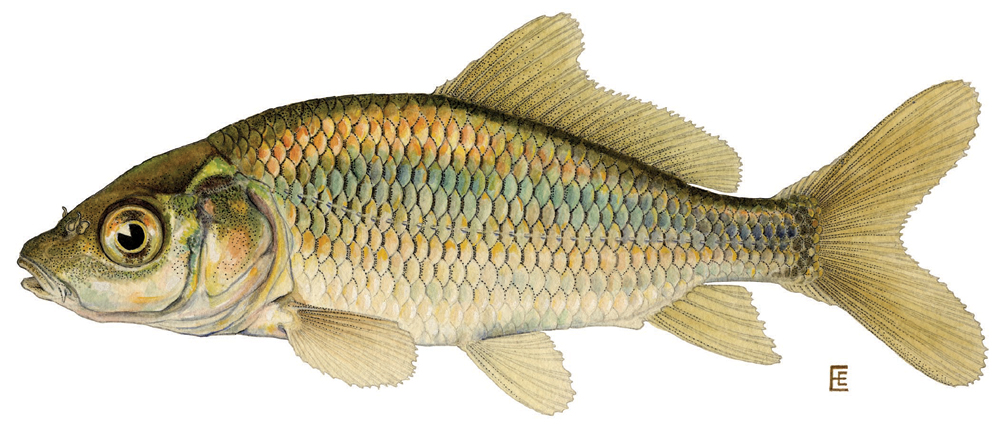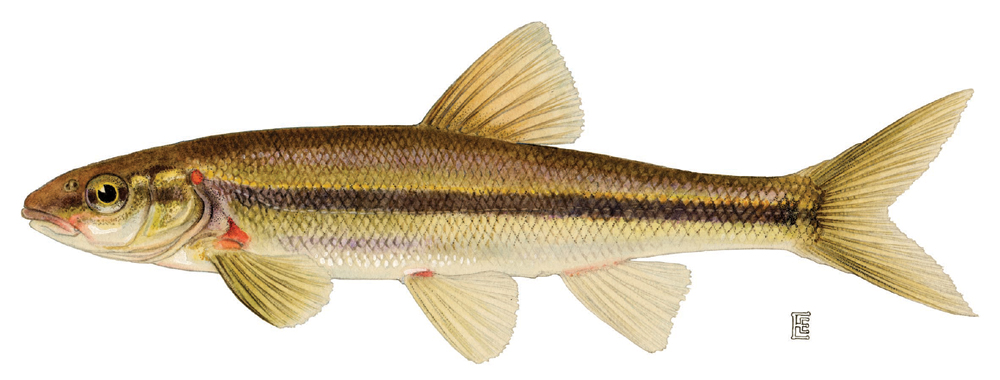Minnow Family
Cyprinidae
"Minnow" is often used to describe small silvery fish. Actually, "minnow" is the common name for the largest family of fishes found in North America. Some 48 species of minnows occur in New York state; five of these are introduced species, among which carp and goldfish are best known. Other commonly encountered native species are creek chub, fallfish, chubs, stoneroller, golden shiner, common shiner, and various dace and minnows. Although many other fish are included in the minnow family, we primarily address those named above.
Various kinds of minnow live in almost all freshwater (and some in brackish water) habitats. These range from headwater bogs, swamps, and springs to rivers, ponds, and lakes. It is possible to find a dozen different species of minnows in a single section of a moderately large stream.
The habits of the different minnows vary greatly. Some are found in large aggregations, and others typically are found alone or associated with only a few other individuals. Some types of minnows occur only in cold water; others are widely distributed in both cold and warmwater environments. Some, like the fallfish, prefer large streams, rivers, and lakes; others, like the pearl dace, usually live in small headwater tributaries.
The abundance of minnows may be attributed to three factors: they can occupy a great variety of habitats, most species require a relatively short period of time to reach breeding age, and a large number of minnows can occupy a small space and find sufficient food and shelter because of their small size.
Although the exotic carp and goldfish are very large minnows, most of our native species are small, seldom exceeding 4 inches. The creek chub, fallfish, and river chub are exceptions; these fish may reach a foot or more. The smaller minnows usually live only 3 or 4 years; larger species may live 7 to 10 years, and the carp may live somewhat longer.
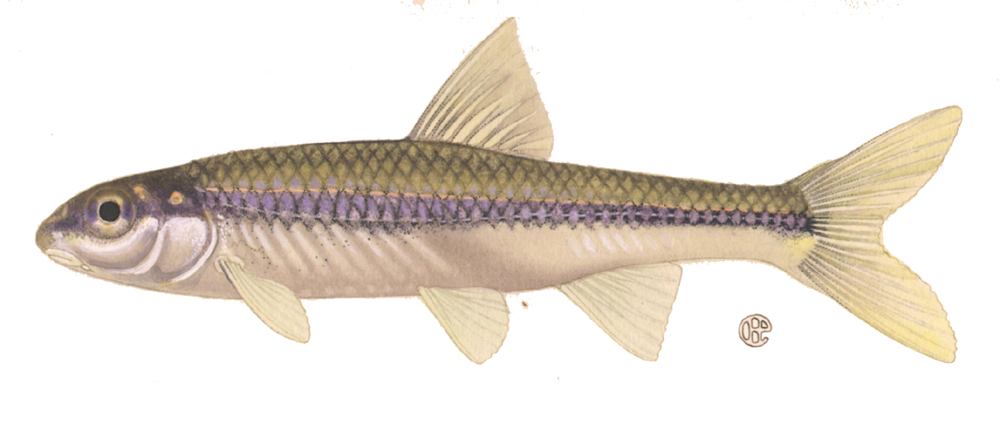 Bigeye Chub (Notropis amblops)
Bigeye Chub (Notropis amblops)
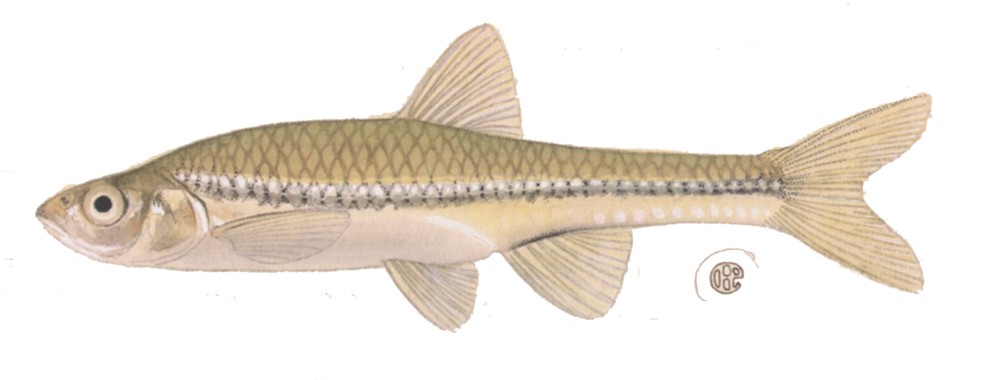 Bigmouth Shiner (Notropis dorsalis)
Bigmouth Shiner (Notropis dorsalis)
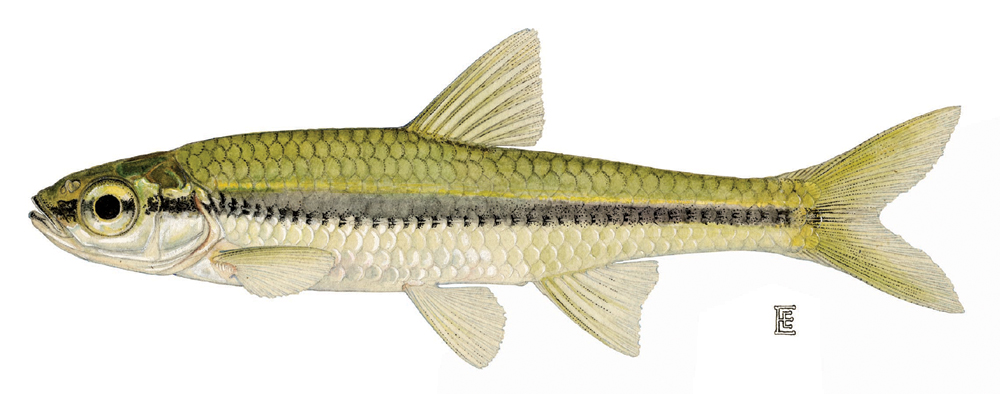 Blackchin Shiner (Notropis heterodon)
Blackchin Shiner (Notropis heterodon)
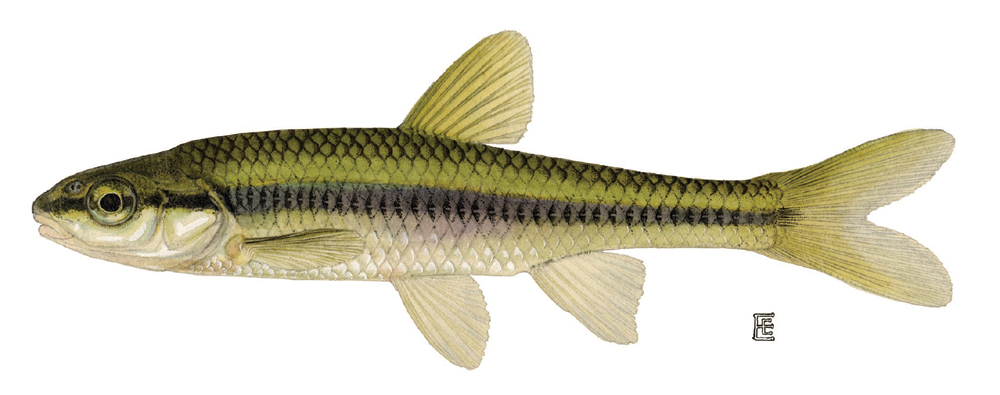 Blacknose Shiner (Notropis heterolepis)
Blacknose Shiner (Notropis heterolepis)
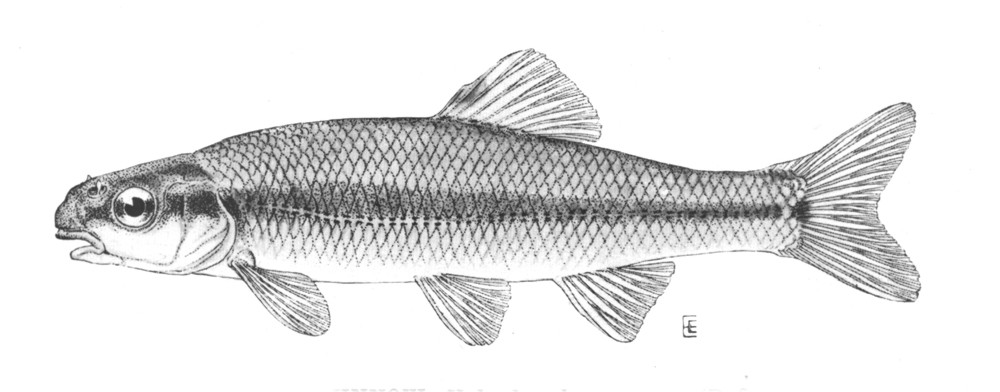 Bluntnose Minnow (Pimephales notatus)
Bluntnose Minnow (Pimephales notatus)
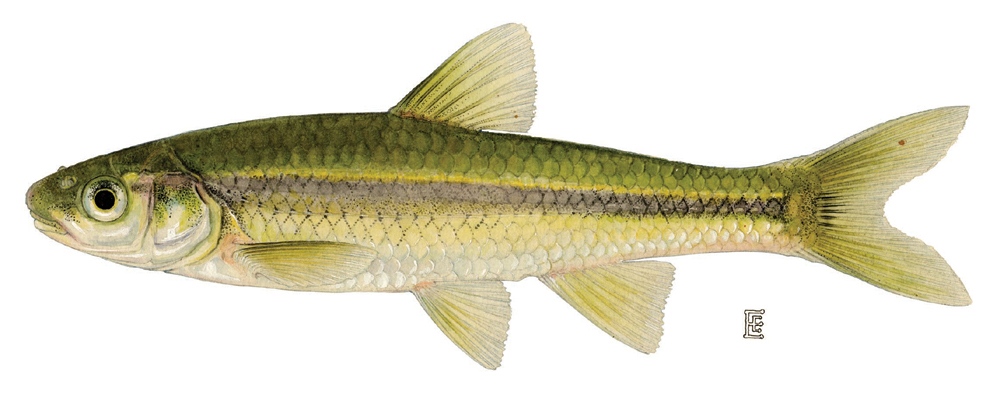 Brassy Minnow (Hybognathus hankinsoni)
Brassy Minnow (Hybognathus hankinsoni)
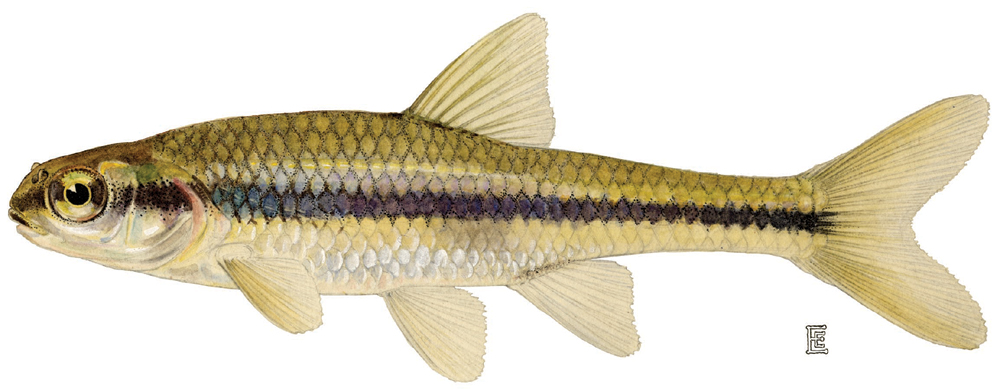 Bridle Shiner (Notropis bifrenatus)
Bridle Shiner (Notropis bifrenatus)
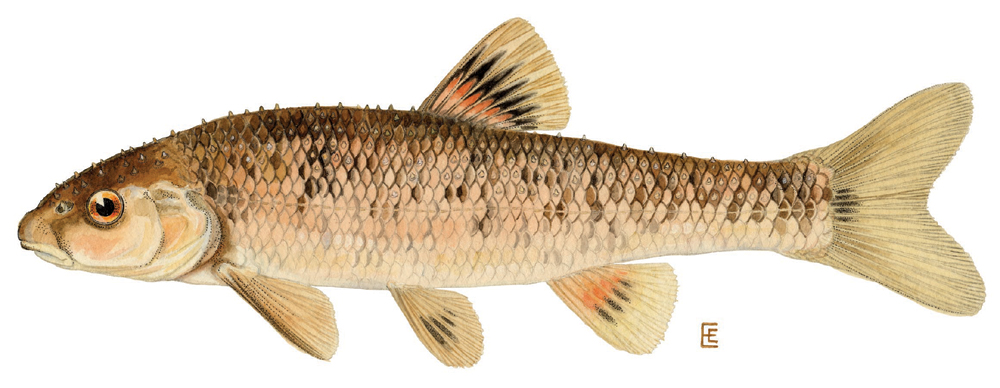 Central Stoneroller (Campostoma anomalum)
Central Stoneroller (Campostoma anomalum)
 Comely Shiner (Notropis amoenus)
Comely Shiner (Notropis amoenus)
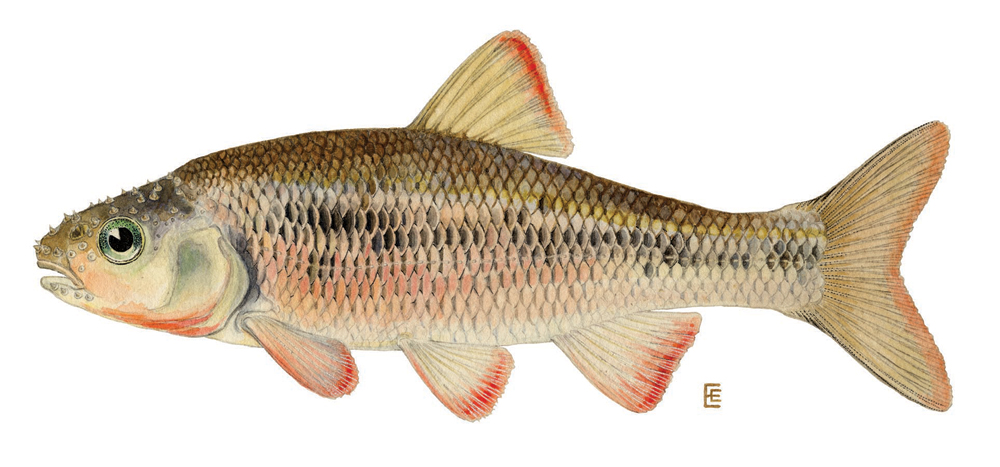 Common Shiner (Luxilus cornutus)
Common Shiner (Luxilus cornutus)
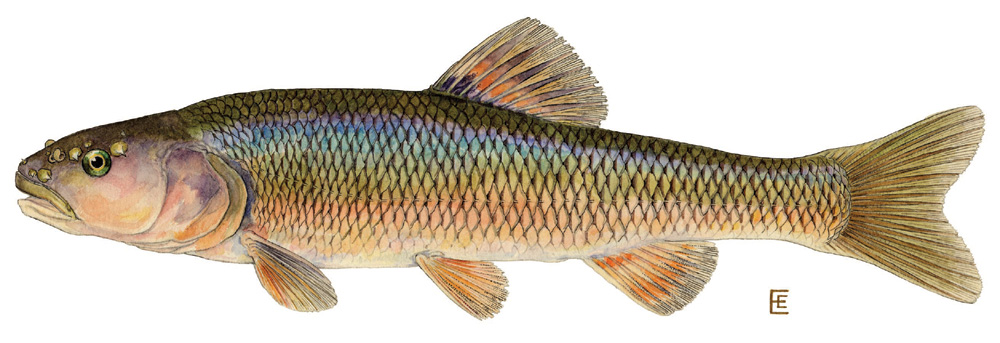 Creek Chub (Semotilus atromaculatus)
Creek Chub (Semotilus atromaculatus)
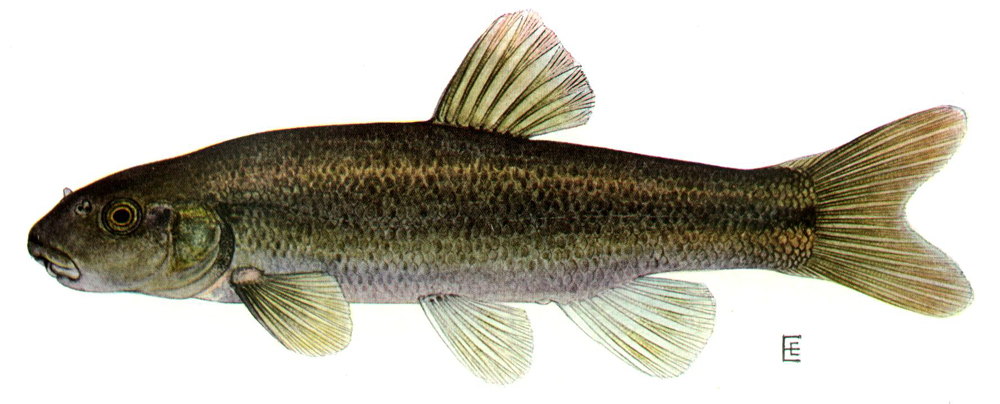 Cutlip Minnow (Exoglossum maxillingua)
Cutlip Minnow (Exoglossum maxillingua)
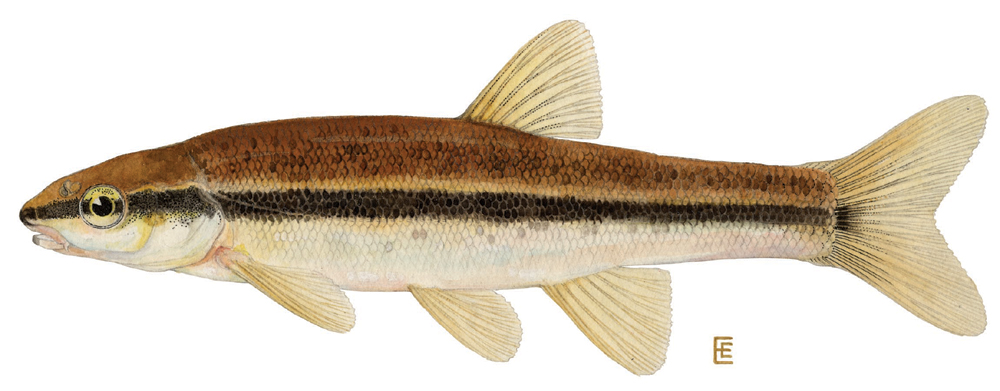 Eastern Blacknose Dace (Rhinichthys atratulus)
Eastern Blacknose Dace (Rhinichthys atratulus)
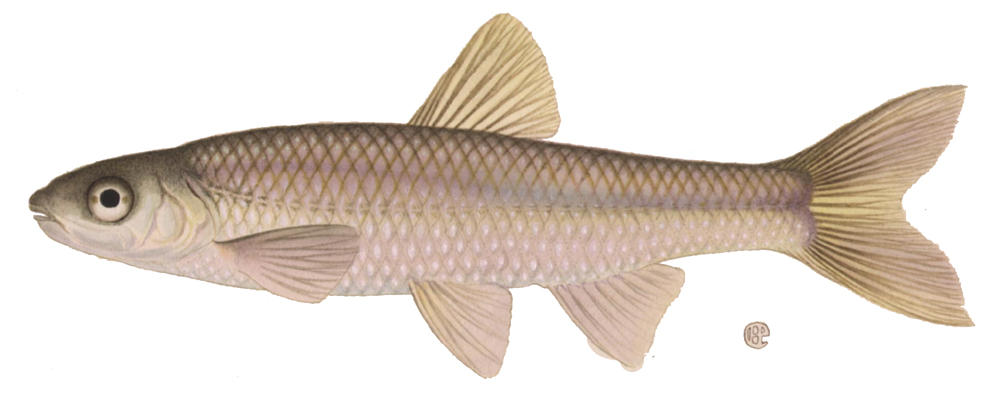 Eastern Silvery Minnow (Hybognathus regius)
Eastern Silvery Minnow (Hybognathus regius)
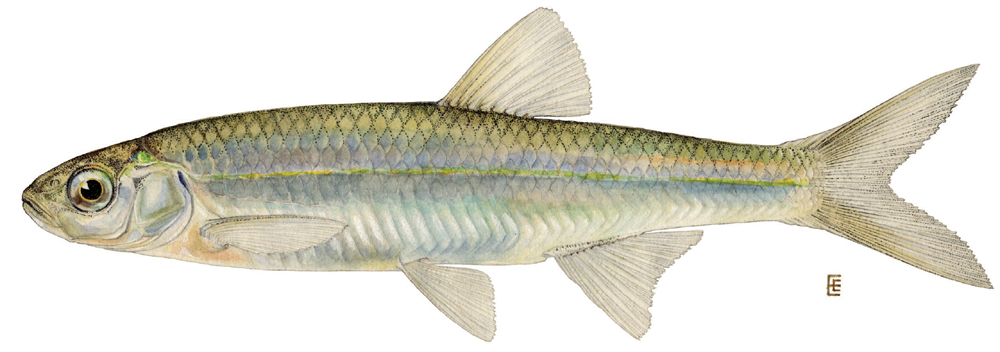 Emerald Shiner (Notropis atherinoides)
Emerald Shiner (Notropis atherinoides)
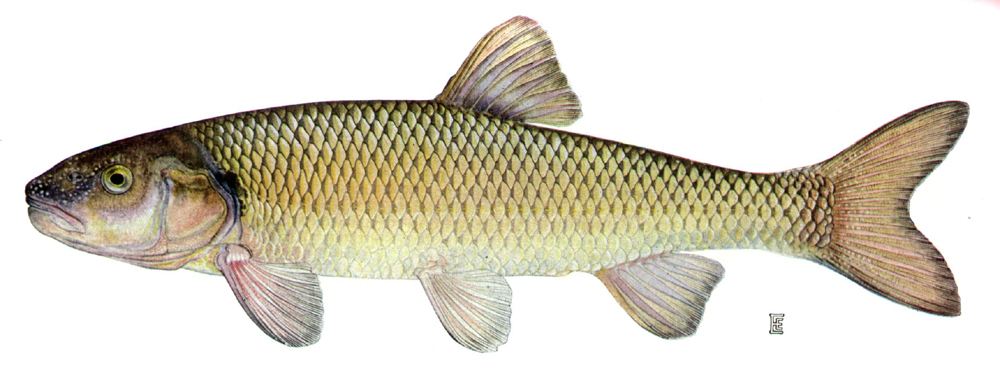 Fallfish (Semotilus corporalis)
Fallfish (Semotilus corporalis)
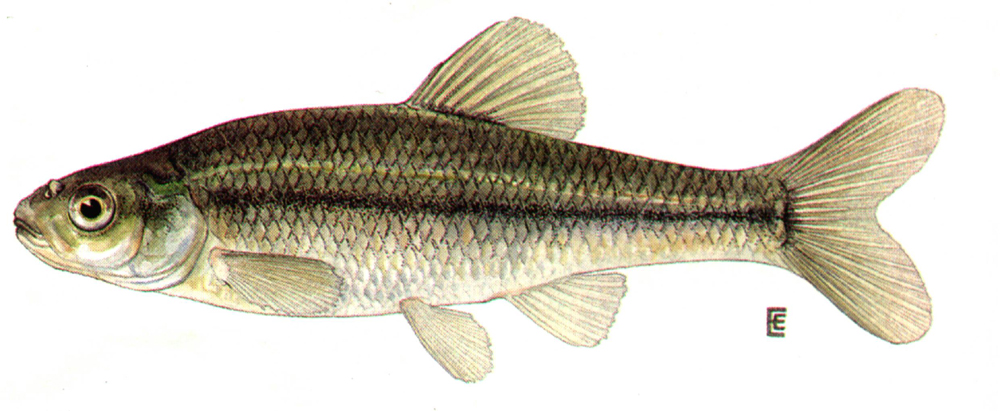 Fathead Minnow (Pimephales promelas)
Fathead Minnow (Pimephales promelas)
 Finescale Dace (Phoxinus neogaeus)
Finescale Dace (Phoxinus neogaeus)
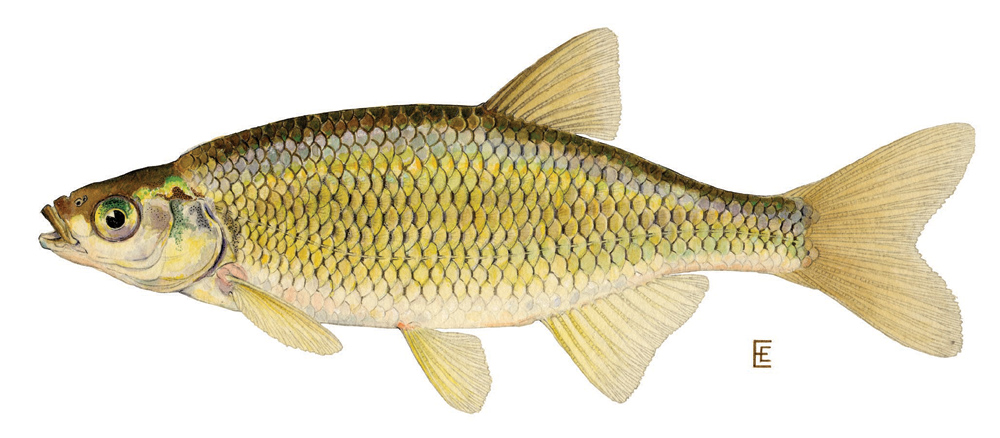 Golden
Shiner (Notemigonus crysoleucas)
Golden
Shiner (Notemigonus crysoleucas)
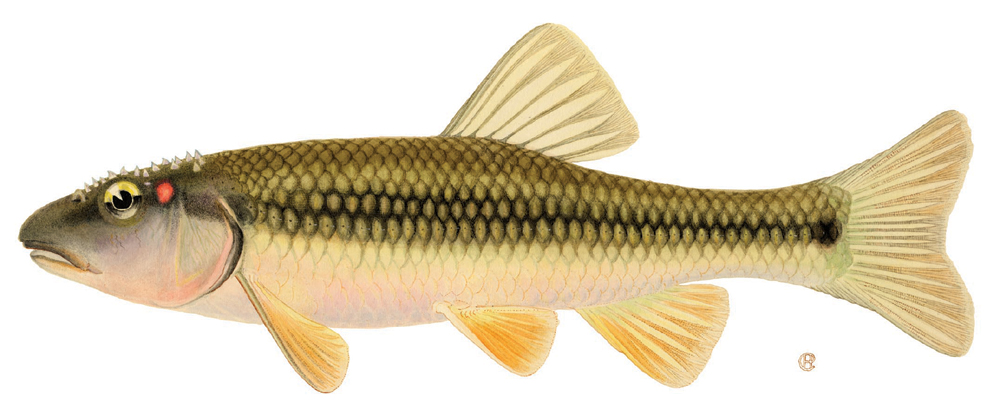 Hornyhead Chub (Nocomis biguttatus)
Hornyhead Chub (Nocomis biguttatus)
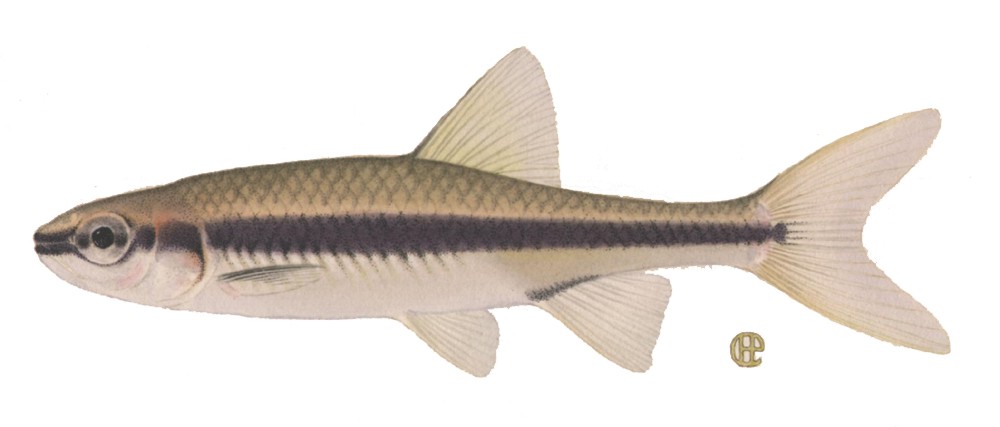 Ironcolor Shiner (Notropis chalybaeus)
Ironcolor Shiner (Notropis chalybaeus)
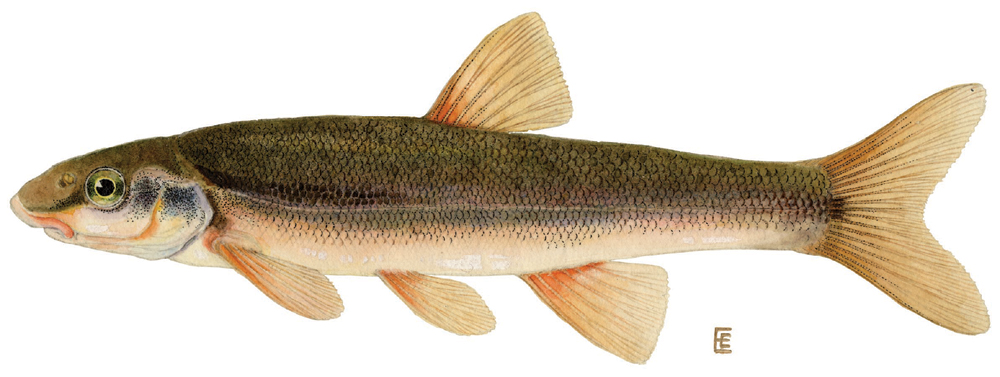 Longnose Dace (Rhinichthys cataractae)
Longnose Dace (Rhinichthys cataractae)
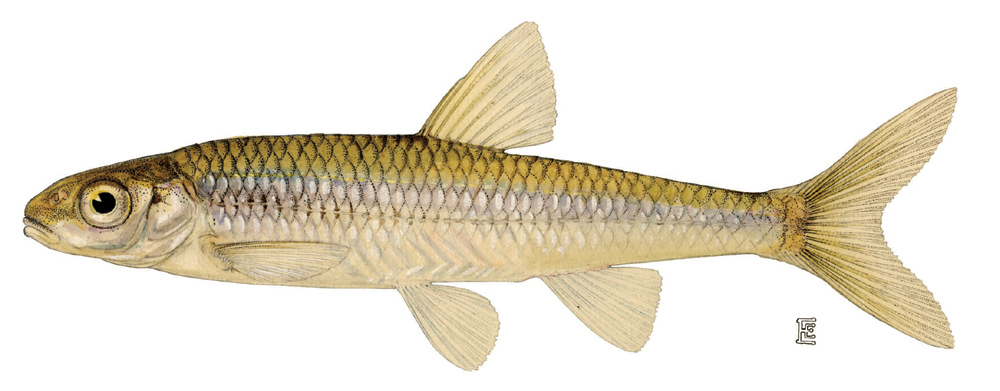 Mimic Shiner (Notropis volucellus)
Mimic Shiner (Notropis volucellus)
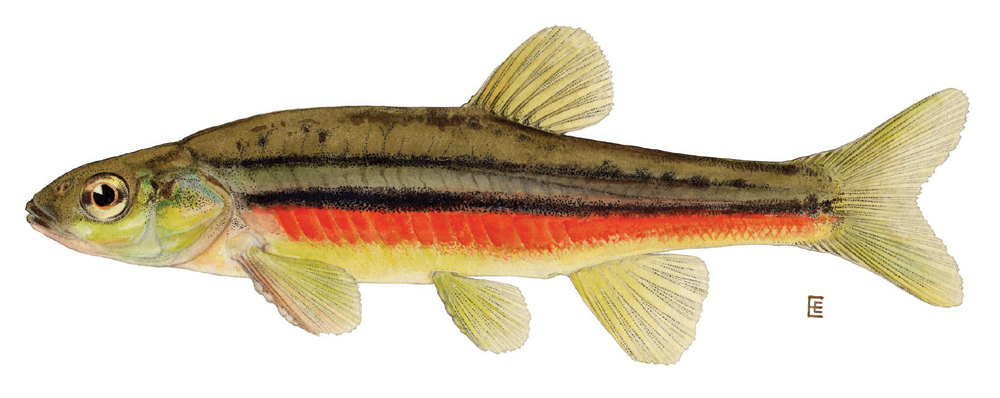 Northern Redbelly Dace (Phoxinus eos)
Northern Redbelly Dace (Phoxinus eos)
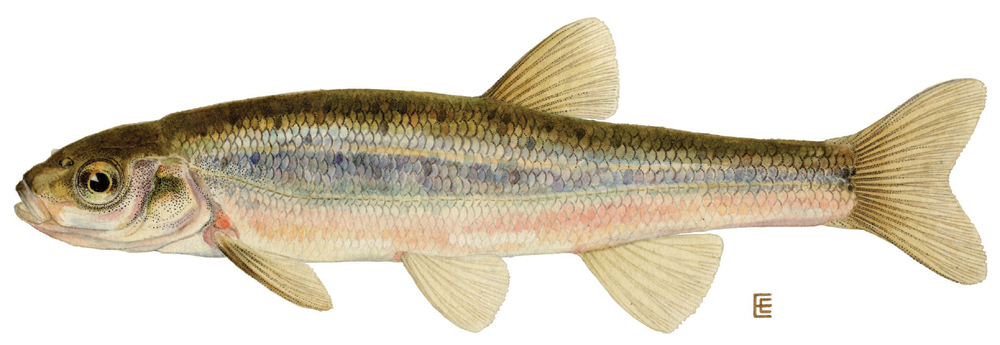 Northern Pearl
Dace (Margariscus nachtriebi)
Northern Pearl
Dace (Margariscus nachtriebi)
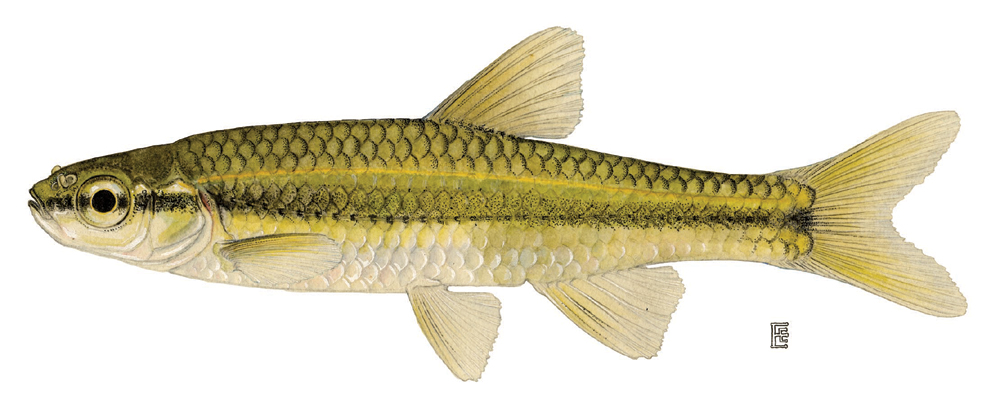 Pugnose Shiner (Notropis anogenus)
Pugnose Shiner (Notropis anogenus)
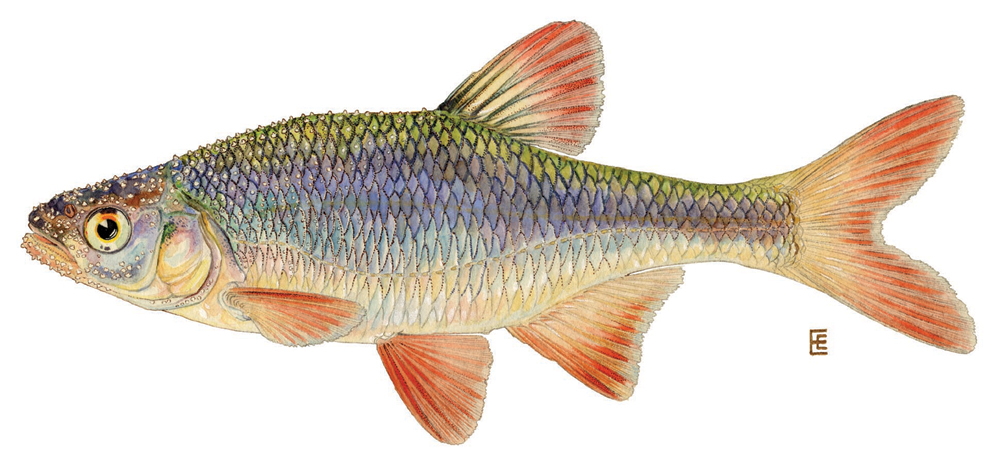 Redfin Shiner (Lythrurus umbratilis)
Redfin Shiner (Lythrurus umbratilis)
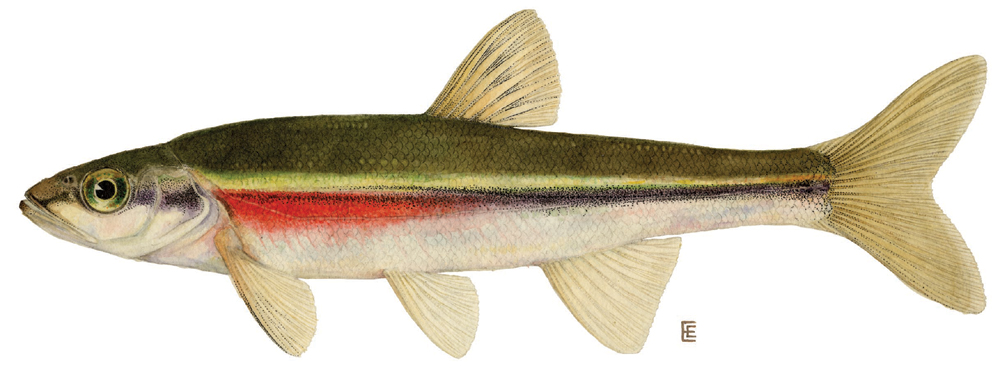 Redside Dace (Clinostomus elongatus)
Redside Dace (Clinostomus elongatus)
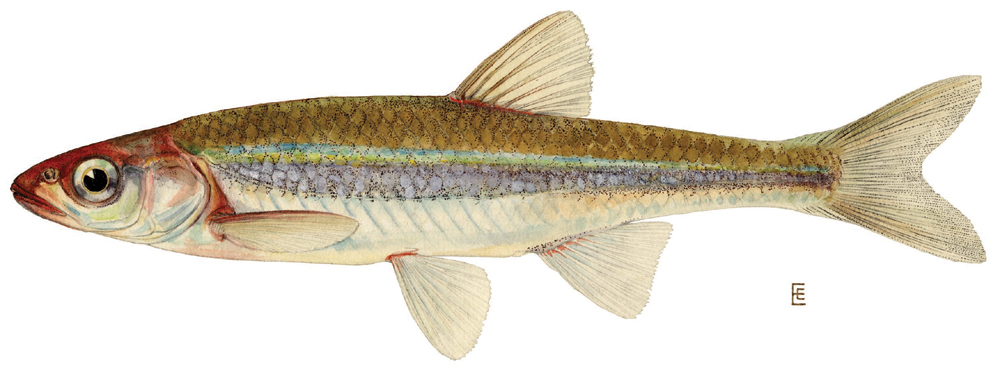 Rosyface Shiner (Notropis rubellus)
Rosyface Shiner (Notropis rubellus)
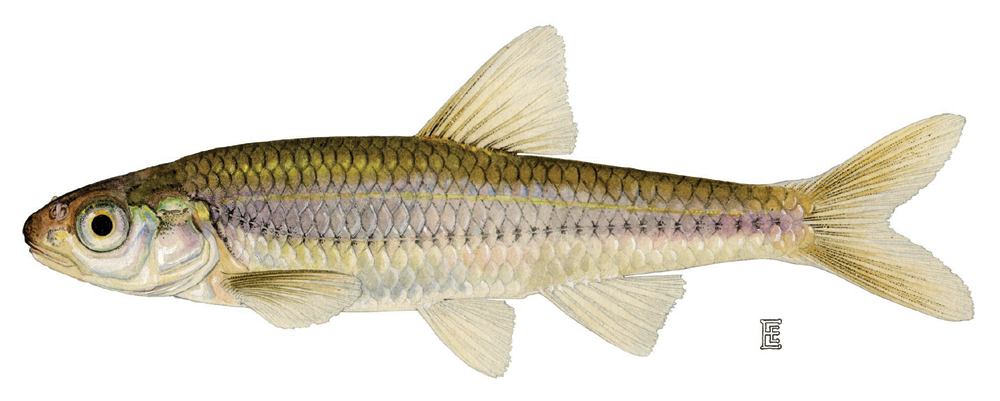 Sand Shiner (Notropis stramineus)
Sand Shiner (Notropis stramineus)
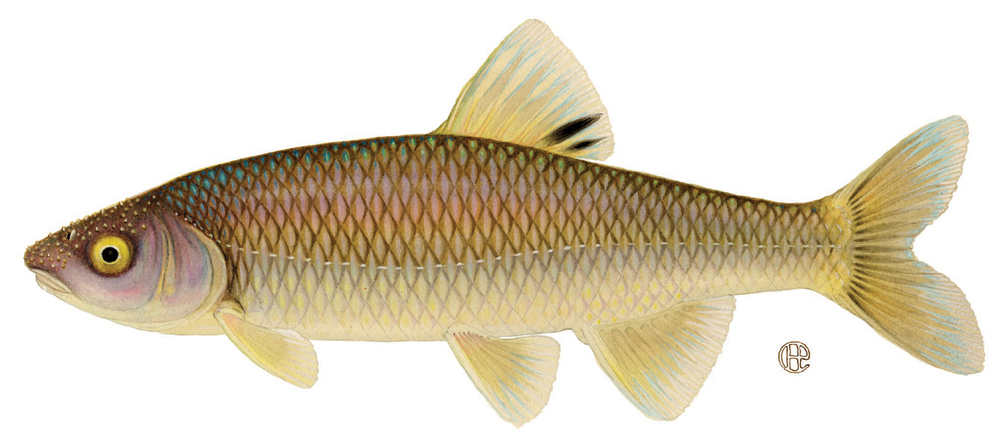 Satinfin Shiner (Notropis analostanus)
Satinfin Shiner (Notropis analostanus)
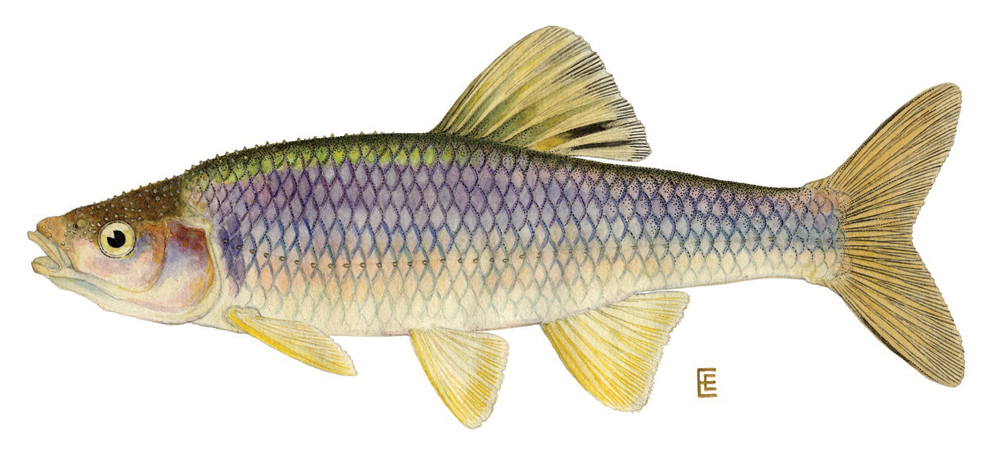 Spotfin Shiner (Notropis spilopterus)
Spotfin Shiner (Notropis spilopterus)
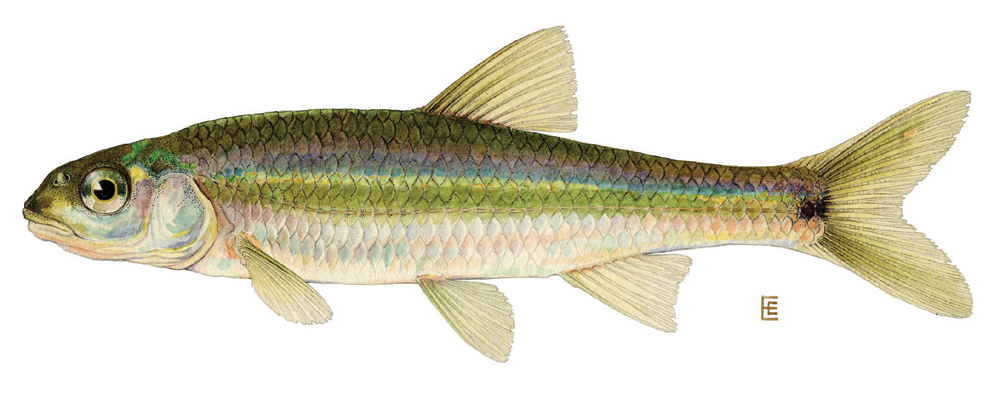 Spottail Shiner (Notropis hudsonius)
Spottail Shiner (Notropis hudsonius)
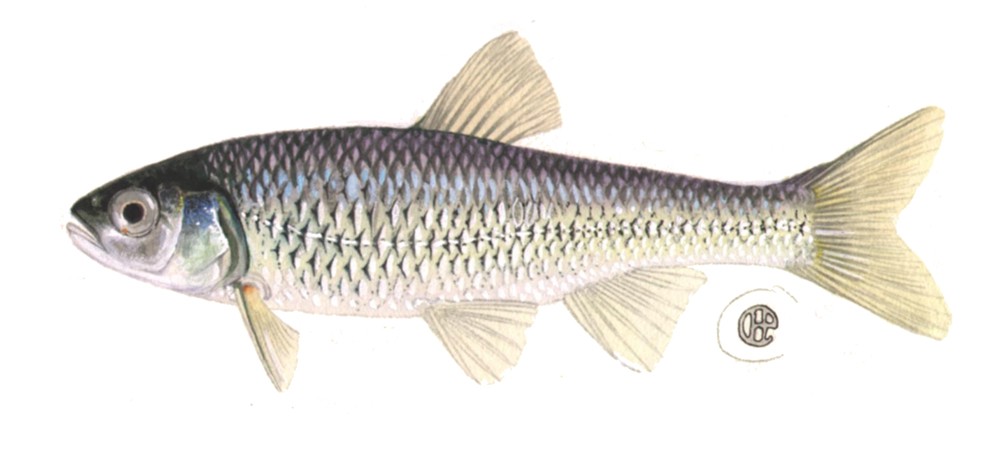 Striped Shiner (Luxilus chrysocephalus)
Striped Shiner (Luxilus chrysocephalus)
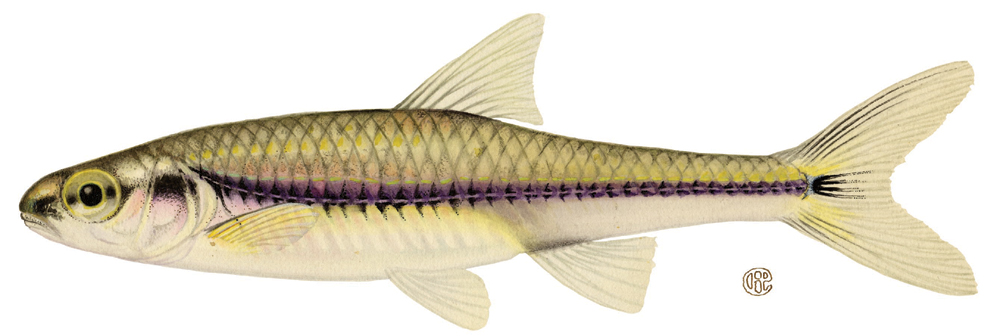 Swallowtail Shiner (Notropis procne)
Swallowtail Shiner (Notropis procne)
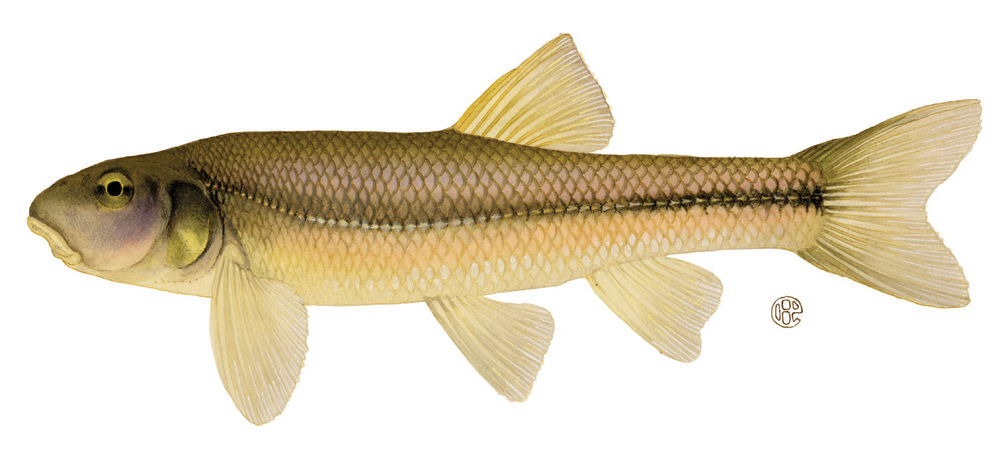 Tonguetied Minnow (Exoglossum laurae)
Tonguetied Minnow (Exoglossum laurae)
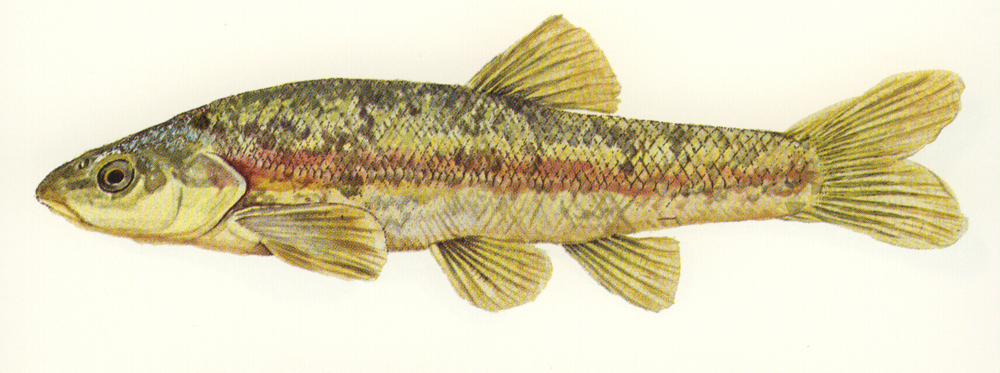 Western Blacknose Dace (Rhinichthys atratulus)
Western Blacknose Dace (Rhinichthys atratulus)
The spawning season for New York's various minnows covers the period from early spring through midsummer, though each individual species has a more limited spawning time within this period. Minnows lay their eggs on or in the bottom, in algae or other aquatic plants. or the male may build and protect a nest.
Three general types of nests are constructed by minnows. First, there are nests consisting of piles of stones (carried by mouth to the nest); second, circular or cup-shaped depressions in or above riffles; and third, excavations under a stone, allowing the eggs to be attached to the underside of the stone.
Nests of more or less circular piles of stones are the easiest to identify, occurring either in fairly quiet waters or in riffles. These nests are built by the male, which carries the stones by mouth. Fallfish, chubs (Hybopsis spp.), and cutlips minnows build nests of this type. Fallfish nests have been measured as large as 6 feet in diameter and 3 feet high. Constructed with flat stones averaging 2 inches in diameter, fallfish nests usually have a keel-like crest, which may lie either crosswise or with the current. Chub nests average 2l/2 feet in diameter and are built up 6 to 12 inches. The cutlips minnow uses small pebbles to build nests about 10 to 18 inches in diameter.
Circular or cup-shaped depressions are excavated by the pit-digging minnows to receive the eggs. The stoneroller minnow, the creek chub, and the common shiner build this type of nest. Two to five male stonerollers work together on a single pit at the downstream end of a pool. They remove material by thrusting their snouts into the gravel and jerking their heads sideways. Stones are occasionally picked up in the mouth and carried upstream. Depressions are up to a foot in diameter. Males fight continually during the operation, even to the point of blinding one another with their breeding tubercles.
The creek chub chooses a spot over a sand and gravel bottom just above a riffle, then digs by forcing his head into the bottom and shaking vigorously. Sand and pebbles are placed upstream in a long ridge parallel to the course of the stream and varying from 1 to 18 feet in length. Subsequent digging covers the eggs.
The common shiner is the most versatile of the minnows; it may excavate a small depression in or above riffles, or it may spawn over the nest of other species, such as the creek chub, river chub, and cutlips.
The bluntnose minnow and fathead minnow fasten their eggs under stones in depressions they have dug.
Just before spawning season, males of many minnow species take on bright colors, including red and orange. In species that are nest builders, the males are usually larger and more brightly colored. They often develop nuptial or breeding tubercles on the body; these tubercles are usually more numerous on the head. The tubercles help to hold the female during spawning and serve as protection. After the spawning season the tubercles fall off and the males lose most or all of their bright colors.
Minnows are not considered game fish though some larger ones (fallfish) may readily take a fly or worm and are fun to catch. Except for carp, they are seldom eaten. However, they are important in their role in aquatic ecosystems. Minnows of various sizes are eaten by the more popular game fish (and fish-eating birds); thus, they provide an important link in the food chain by converting certain small aquatic plants and animals (algae, insects, fish, etc.) into protein available to larger fish. Also, some naturalists believe that the presence of minnows relieves predation on the young of game fishes. On the other hand, minnows, especially larger ones, may compete with game fishes, particularly trout, for food and space. They also can harm reproduction of sport fish by consuming eggs and, in some cases, by preying upon the young fish.
Many of the minnow species are difficult to identify correctly, and one must exercise care in examining characteristics used to distinguish species.
